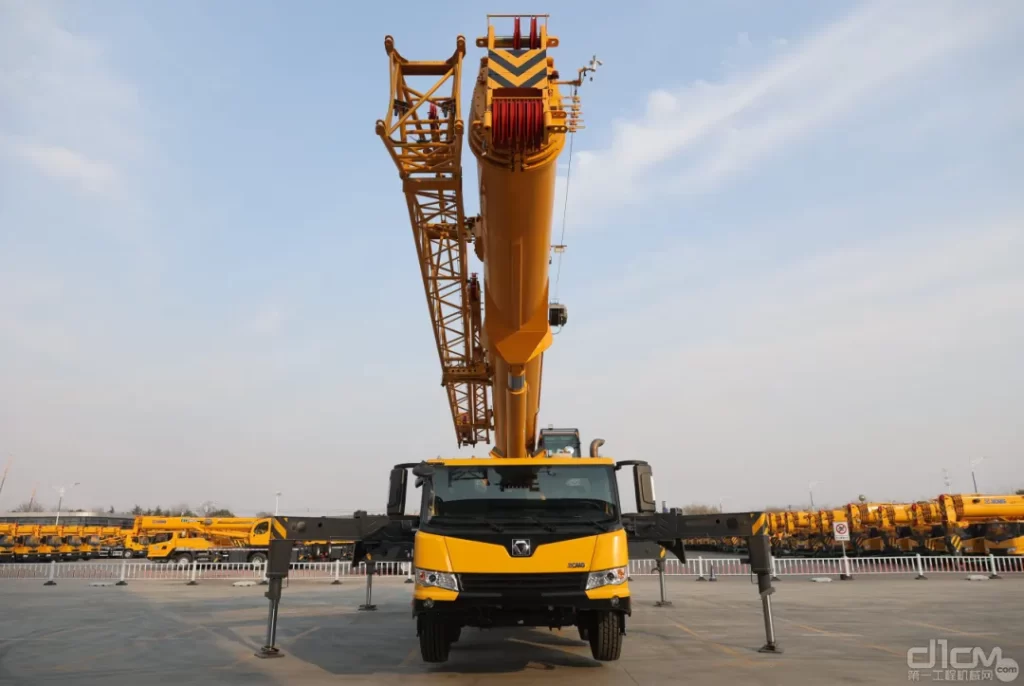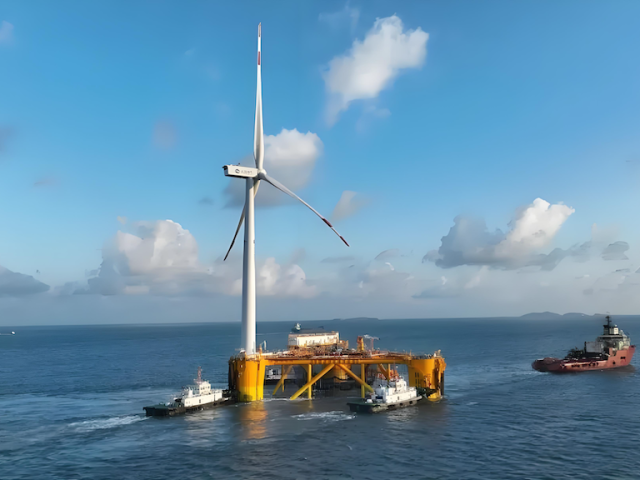XCMG is looking to strengthen their mid-tonnage truck crane and has launched a new flagship 6-section XCT80L6_2 truck crane. It was developed based on the G1 generation technology platform, improved performance and machine intelligence.

Through the technology improvement, the 80-tonne 4-axle measure just 15m in length and the 6-section main boom has a maximum length of 60.5m and 17.5m jib. It has an option for an additional 7m boom insert, increasing the total lifting height to 85m.
Under the typical working conditions, with the main boom of 47.9m, the 80-tonne truck is able to lift 19 tonnes at a 16m working radius and 8.6 tonnes at a 30m working radius, surpassing the performance of some 100-tonne class truck cranes in the market.
Dual Driving Configuration
In the case of unstable road conditions, the crane has two configurations that you can choose from. The crane can engage rear 2-axles with twin tires, which have a strong load-bearing capacity that can avoid the crane stuck in adverse road conditions.

When travelling along the smooth road surfaces, the full-axle steering mode can be engaged which has a similar ability to an all-terrain model.
Economical Taxi Configuration
The crane has a full counterweight of 33 tonnes and it can carry 24.6 tonnes of counterweight on board, allowing the crane to work on 75% of its performance as a taxi crane.
8 tonnes of the counterweight can be placed under the luffing cylinder, 7 tonnes behind the turntable and 9.6 tonnes hang at the rear of the chassis.
The balance of 9.6 tonnes of counterweight is divided into 2 pieces of 4.8 tonnes, which are more convenient to carry, meeting the needs of different users.
Improved vehicle safety with brake upgrade
While most of the crane in the industry uses drum brakes, XCMG has already upgraded their brakes to double-caliper disc brakes. Compared with the original single-caliper brakes, it provides a better braking efficiency and quicker braking response.
Pump & Valve Combination Control
The high-speed operation of the hoist is controlled by the pump, which reduces the pressure loss of the hydraulic pipeline, improves the system efficiency and reduces the heat generation.
The low-speed hoisting operation is valve-controlled which has more accurate flow control. This in turn will produce a more stable hoisting speed and better performance.





















